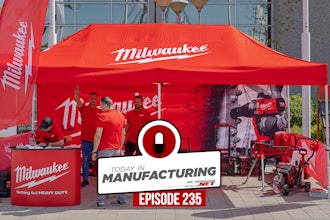Toyota suffered a major production setback last month when it had to shut down all 28 vehicle assembly lines at all 14 of its automotive plants in Japan. The company is now saying that this bad memory was caused by a lack of memory.
For Similar Content: Subscribe to Daily Newsletters
According to the Guardian, Toyota said the August 29 production stoppage occurred after “insufficient disk space” caused a system malfunction following a standard maintenance procedure. In a statement, the automaker said “data that had accumulated in the database was deleted and organized, and an error occurred due to insufficient disk space, causing the system to stop.” The data was transferred to a different server with more capacity, allowing production to start back up the next day.
“We would like to apologize once again to our customers, suppliers, and related parties for any inconvenience caused by the suspension of our domestic plants,” Toyota said. “We will review our maintenance procedures and strengthen our efforts to prevent a recurrence, so that we can deliver as many vehicles to our customers as soon as possible.”
It’s unclear if vehicle deliveries will be impacted by the production stoppage and, if so, which vehicles will be affected. As the Guardian report points out, the 14 Toyota plants account for about one-third of the company’s worldwide production. According to Reuters calculations, Toyota cranks out about 13,500 vehicles per day in Japan. Using the company’s average global vehicle sales price, the publication estimated that a full day of production at those plants equals about $356 million in revenue.
Toyota describes its lean vehicle manufacturing philosophy as “Just-in-Time,” where “each process produces only what is needed for the next process in a continuous flow.” But as the Today in Manufacturing Podcast noted, that means the company doesn’t have the inventory to keep the production process running when there’s a disruption.






















